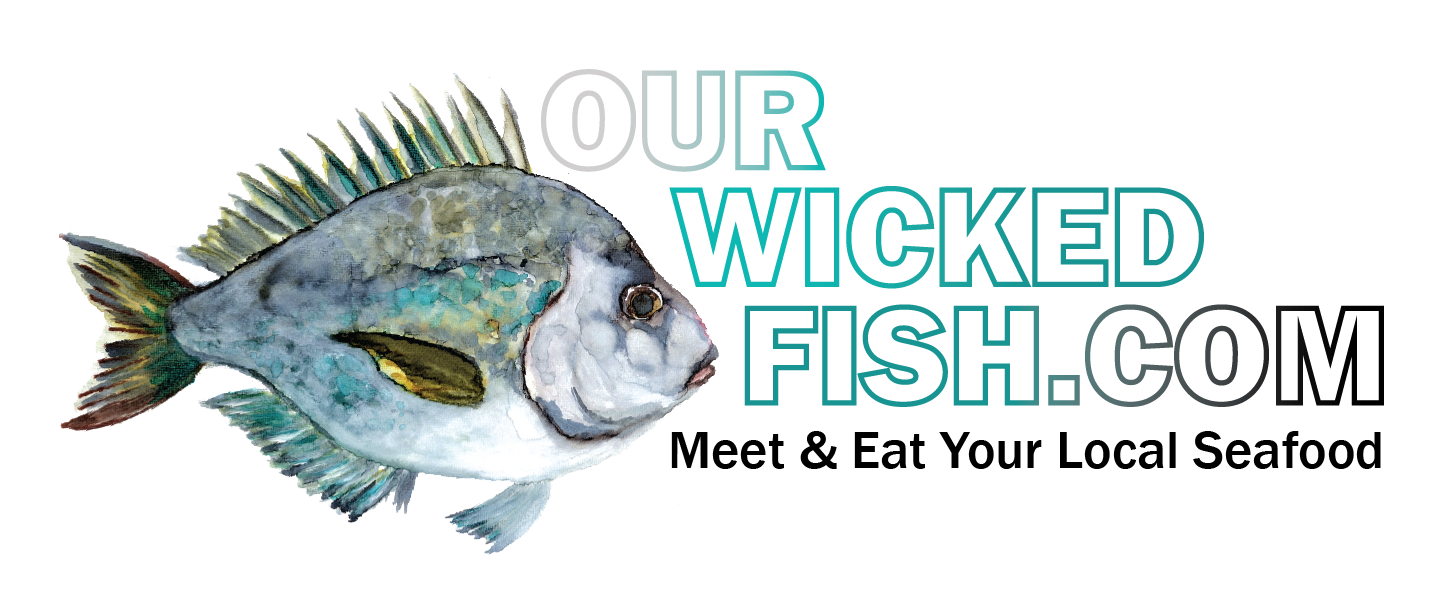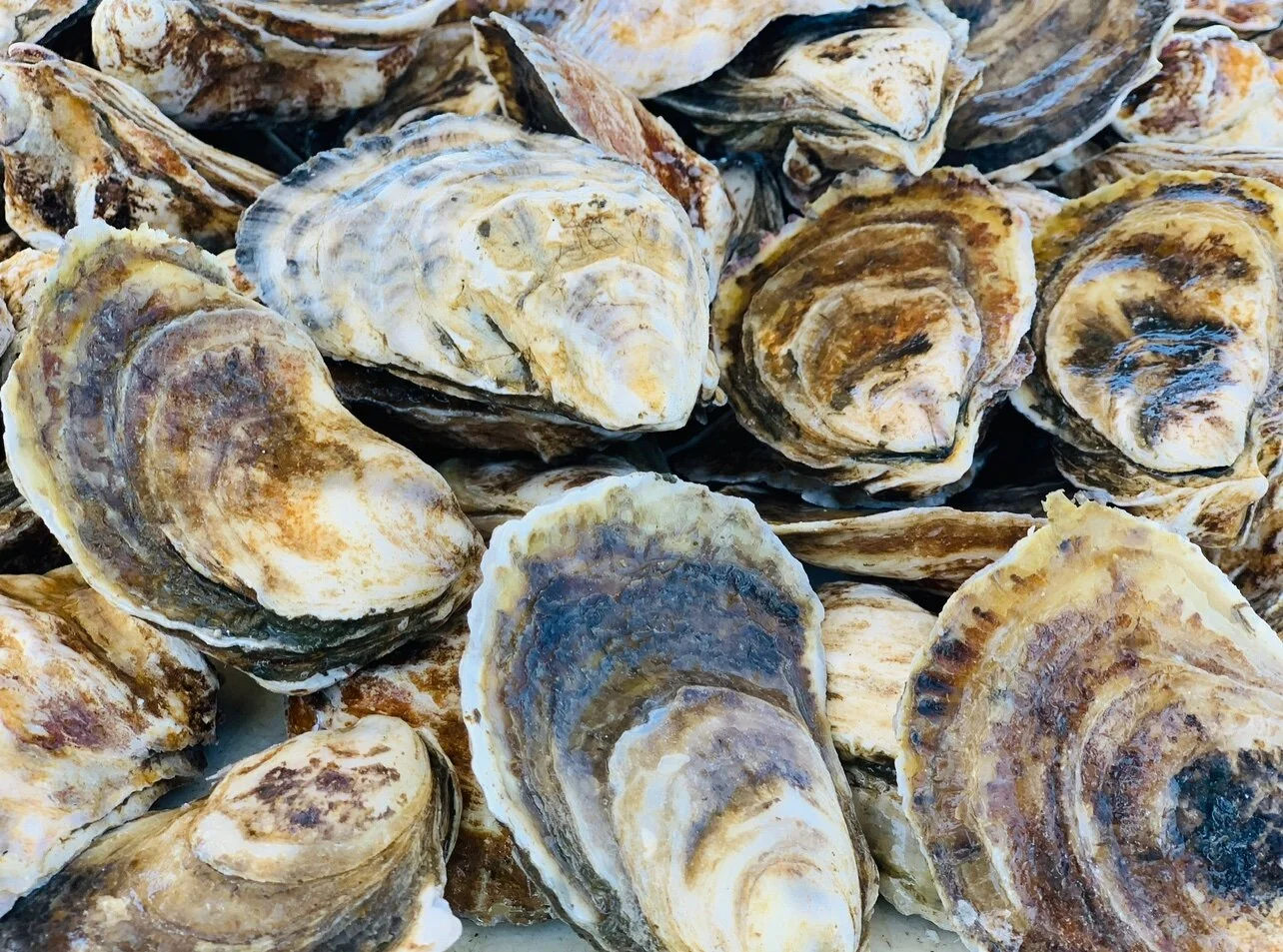Atlantic vs. Pacific vs. Norwegian vs. Wild salmon
Buying salmon can be confusing!
At the market, you see different names like “Pacific”, “Norwegian”, “Atlantic” and “Alaskan”. What does this all mean?!
We are going to try to clarify some questions and provide a few key pieces of information about salmon - especially the difference between Atlantic salmon and wild salmon.
but first, did you know there are six different species of salmon?
In the U.S., there are:
Chinook (or “King”)
Sockeye
Coho
Pink
Chum (or “Keta”)
and Atlantic. The Atlantic species can also be called “Scottish”, “Norwegian”, or “Canadian”.
Even though they all look similar when they are filleted (hues of pink to red with streaks of white fat), the different types of Atlantic salmon fillets are drastically different from the other five species. Why? Because all Atlantic salmon is all farmed!
When it comes to Atlantic salmon, there are five important differences that many consumers - and even chefs - don’t know about.
1. ALL ATLANTIC SALMON FOR SALE ARE FARMED- RAISED AND MOSTLY FOREIGN.
WHERE DID EVERYBODY GO?
Very few wild Atlantic Salmon exist today. In fact, they’re listed as endangered in the Gulf of Maine and their fishery has been shut down since 1948.
Salmon swim upriver to spawn and reproduce but dams have blocked Atlantic Salmon from swimming upriver for decades.
This means that the "Fresh Grilled Atlantic Salmon" featured on the menu never swam in open waters or swam upriver to spawn. All Atlantic Salmon are considered crops at fish farms.
While there are a few farms located in Maine and Washington, most of the Atlantic salmon are raised in Canada, South America (primarily Chile) and Europe (primarily Norway). In the U.S., we primarily don't eat our own domestically grown salmon because consumers demand is too great for our country to support. Instead, the U.S. primarily consumes imported Atlantic Salmon. A lot of it!
2. CHILE IS OUR PRIMARY SUPPLIER OF ATLANTIC SALMON.
Atlantic salmon are, well, native to the cold areas of the Atlantic ocean. Yet, our biggest supplier raises these fish in the Pacific ocean.
Total U.S. Atlantic Salmon Imports in 2014 by country, according to the USDA
Chile 279,004,000 lbs.
Canada 104,399,000 lbs.
Norway 57,657,000 lbs.
United Kingdom 34,060,000 lbs.
According to the USDA Reports in 2014 , the U.S. imported over 539 million pounds of foreign Atlantic Salmon (valued at over $2.3 billion US), over half of which was imported from Chile. Meanwhile in the same year, the U.S. exported over 11.5 million pounds of U.S. raised Atlantic Salmon (valued at over $37.2 million US).
IS THIS A GOOD THING?
There is much controversy among farmers and consumers about the aquaculture regulations in Chile. There is concern on whether the growing number of fish farms in Chile, especially in the Patagonia region, are doing more environmental harm than good (extensive amounts of antibiotics being used, escaped fish, seafloor bottom pollution from accretion of fish waste, wild fish eating farmed fish feed, etc.). There is also concern about regulation enforcement.
3. FARMED ATLANTIC SALMON ARE ARTIFICIALLY COLORED.
Atlantic Salmon are available in a variety orange and red hues because they have to be artificially colored. Just like the paint supply store, fish farmers are given swatches of orange and red so they can choose their ideal shade of fish flesh. How do they get the color? Their diet!
WILD SALMON DIET
Wild salmon have pink/orange meat because their diet of krill and shrimp are high in pink/orange pigments called carotenoids. These naturally occurring carotenoids color the salmon's flesh pink (carotenoids in brine shrimp are also the reason why flamingos are pink!).
ATLANTIC SALMON DIET
Farmed salmon are not fed shrimp or krill. Farmed salmon are fed "fish pellets". Fish pellets are made up of a variety of protein supplements such as fish meals/oils, chicken bones/feathers, and grains that plump up the salmon to market weight in just a few months. To make the salmon's flesh a vibrant, attractive pink for consumers fish pellet producers need to add synthetically made carotenoids to the fish feed (either canthaxanthin or astaxanthin).
Without these artificial colorants, Atlantic Salmon fillets would be a dull grayish color. It is mandatory in the U.S. for all Atlantic Salmon labeling to mention the use of artificial colors.
WANT TO KNOW MORE?
What Salmon Eat- Atlantic Canada Fish Farmers Association
Atlantic Salmon Feed-Food and Agriculture Organization of the United Nations
4. ATLANTIC SALMON ARE TREATED WITH ANTIBIOTICS
WASTE
Atlantic Salmon are big fish that excrete a lot of waste! If the cages are not located in an area with strong tides, waste can accumulate around the fish and at the bottom of the ocean floor. To prevent and treat diseases and parasites from waste accumulation, farmers have to incorporate antibiotics into the fish feed.
SEA LICE
The biggest threat to fish farms are sea lice. Sea lice begin life as a louse in the water column. As the louse matures, it will hook onto the Atlantic Salmon and begin a parasitic relationship - feeding off of the salmon’s mucus, blood, and skin. Sometimes, but not always, sea lice can be treated solely with antibiotics.
QUANTITY AFFECTS QUALITY
There is concern over the quantity of antibiotics used throughout fish farms. In 2013, Chile's National Fisheries and Aquaculture Service reported that a whopping 990,000 lbs of antibiotics were used among their fish farms. Meanwhile, Norway grew more salmon that year and required a far lesser amount of antibiotics- 2,100 lbs.
* Salmon raised in the Faroe Islands are not given antibiotics
WANT TO KNOW MORE?
Use and Abuse of Antibiotics in Salmon Farming-Oceana
ea Lice-Watershed Watch Salmon Society
5. ATLANTIC SALMON ARE COMMONLY RAISED IN SMALL CONTAINED AREAS AND IN HIGH DENSITY
All wild salmon are migratory fish and they build up their flesh from intense swimming.
Atlantic Salmon are raised within sea cages, also referred to as sea pens. In each sea pen there are hundreds of fish and very little available space, if any, for open swimming. These sea pens are not designed for animal welfare-they're money makers first and foremost.
CONCLUSION
Now that you know these fish factoids, perhaps you have a better concept of these amazing fish. Next time you see Atlantic Salmon and Wild Caught Alaskan Salmon, you'll know that there are more differences between the two fillets than price.
If you are one of the many who only eats salmon because of their omega 3,6,9 content, know that there are other options! Check out these alternatives in our next article - Domestic Omega-3s: There Are Other Options Than Imported Atlantic Salmon.
Talks you may like..
Dan Barber squares off with a dilemma facing many chefs today: how to keep fish on the menu.
The way we fish for popular seafood such as salmon, tuna and shrimp is threatening to ruin our oceans. Paul Greenberg explores ...
















TJ Peckham, a native of Massachusetts’ North Shore, is here to show you the benefits of purchasing seafood from a CSF such as Cape Ann Fresh Catch. Because of Cape Ann Fresh Catch, consumers throughout New England receive seafood that is affordable, sustainable, and of exceptional quality every week, all year round. Their business model allows fishermen to focus on quality, not quantity, and the story of Cape Ann Fresh Catch is one everyone in Massachusetts should know.